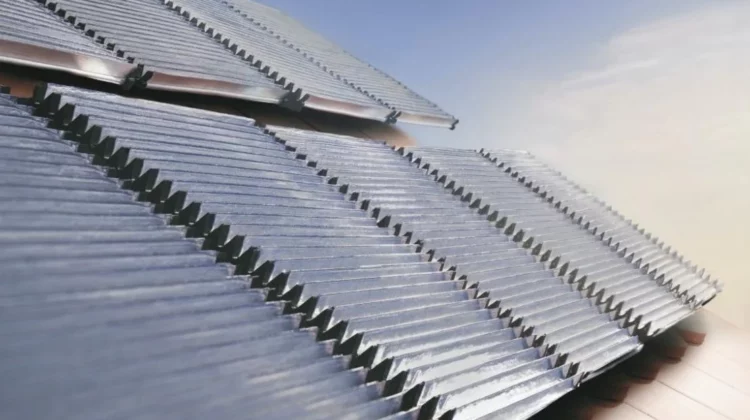
An international team that includes researchers from the University of Toronto has designed and implemented a new model for photoreactors, a solar-powered technology for converting water, carbon dioxide, methane and nitrogen into greener chemicals and fuels.
The innovative design allows the photoreactor to capture photons at high efficiency under varying sun directions, eliminating the need for sun-tracking. The panels are also manufacturable via the extrusion of polymers, making them inexpensive and easy to manufacture at scale – all of which could help make a sustainable future more affordable and practical.
Geoffrey Ozin, university professor in the University of Toronto’s department of chemistry in the Faculty of Arts & Science, and his team collaborated with researchers from the Karlsruhe Institute of Technology (KIT) in Germany on the project.
Despite their potential, many photoreactors have been plagued by several challenges, including the high cost of construction materials. They can also be inefficient in converting sunlight into products. To create these photochemical conversions, photoreactors rely on a photocatalyst – a material that absorbs light and converts a reactant into a product.
However, non-productive processes due to the reflection, scattering, transmission and absorption of light by the photocatalyst and the photoreactor materials can result in energy loss.
To be technologically and economically viable, the sunlight-to-product conversion efficiency of the photoreactors must be at least ten per cent. While the science of integrating photocatalysts into photoreactors over the past decade for making green chemicals and fuels has yielded significant advances, the efficiencies have remained low – often one per cent or less.
Ozin’s team and the group from KIT – which included postdoctoral researcher Paul Kant, PhD student Shengzhi Liang, research scientist Michael Rubin and Professor Roland Dittmeyer – developed a panel-like photoreactor that contains hundreds of parallel microscale reaction channels.
A key feature of their design is that each reaction channel is connected to a V-shaped light-capture unit that guides the light into the channel where the photocatalyst is located. All surfaces are highly reflective to optimise the transport of photons from the external light source to the photocatalyst housed in the microchannels with minimal loss of light.

Future design adaptations can address the issue of intermittent sunlight by using light-emitting diodes integrated into the photoreactor as the photon source, powered by renewable electricity from photovoltaics and backed up by lithium-ion battery storage to provide 24/7 operations.
The new photoreactors can be used on rooftops and in solar farms, and can potentially be integrated with photovoltaics to produce both renewable electricity and green chemicals and fuels.
‘This technology has inspired the development of a new generation of solar-powered devices that instead make green fuels such as hydrogen from sunlight and water,’ Ozin said.
‘These solar products will substitute their fossil-based analogues – and will help to reduce our carbon footprint,’ said KIT researcher Kant. ‘This directly increases chances that we will be able to reach the dream of a sustainably living humanity.’
The research has been published in Joule.


